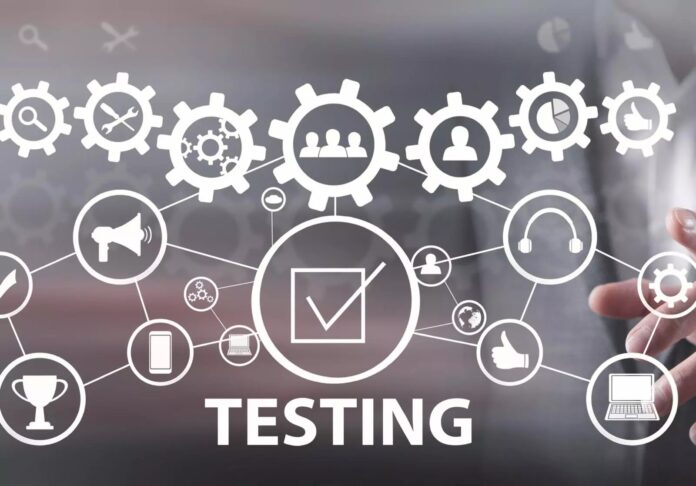Software testing is the process of verifying and validating whether a piece of software or application is bug-free, meets every technical requirement established during its design and development, and effectively and efficiently satisfies user requirements while handling all exceptional and boundary cases.
In addition to finding faults in the software that is already in use, the process of software testing looks for ways to improve the product’s effectiveness, accuracy, and usability. It mainly aims to measure a software program or application’s specification, functionality, and performance.
Top Trends in Software Testing
The following are the key trends in software testing for 2023 that are changing the face of Software Testing.
- Agile and DevOps
Agile is an approach to software development that places a focus on iterative delivery, collaboration, continual planning, and continuous learning. Agile makes testing a necessary component of the software development process.
To shorten the software development life cycle and manage end-to-end processes, DevOps combines development (Dev) and operations (Ops).
Companies are adopting Agile and DevOps processes to shorten the time it takes for software to be developed, delivered, and operated as well as to enhance the quality of finished products.
Teams may produce high-quality software more quickly by implementing Agile & DevOps. Over the past few years, the majority of businesses have shown interest in adopting Agile & DevOps.
2. Test Automation
Software teams can’t ignore test automation because it is an essential component of the DevOps process if they want to implement DevOps practices successfully.
They must look for chances to switch from manual testing to automated testing. Since test automation is considered to be an important DevOps bottleneck, at the very least, most regression testing should be automated.
There is a lot of room to increase the adoption of test automation in organizations given the popularity of DevOps and the fact that less than 20% of testing is currently automated. To enable better test automation in projects, more sophisticated methods and technologies ought to be developed.
Selenium, Katalon, and TestComplete, three widely used automation tools, continue to develop new features that make automation much simpler and more efficient as well.
- API and Services Test Automation
The client and server are currently being separated in both web and mobile app design.
The same API and services are used by numerous apps and components. Teams will now need to test APIs and services separately of the applications that will be using them due to these changes.
When testing APIs and services instead of client apps and components, there are significant time and cost savings. The demand for automated testing of APIs and services is expected to increase over time, possibly even surpassing that of user-interface features.
More than ever, API automation testing needs the right method, tools, and solution.
- Artificial Intelligence in software testing
The use of AI in software testing will continue to grow as AI-enabled technologies help reduce the amount of manual testing necessary and give more accurate results. AI helps in automating the testing process, fixing bugs in software, and swiftly identifying problems. With AI-powered bots monitoring software systems and detecting anomalies that could point to a potential error, less time is spent manually troubleshooting and debugging software. AI can discover and diagnose software issues more accurately.
AI helps in data analysis and the development of better test cases. AI may help in test result analysis and report generation for developers to proactively fix issues.
- Mobile App testing
In terms of software testing trends for 2023, mobile app testing is expected to have even more significance. As the mobile industry expands quickly and more users rely on mobile apps for a variety of activities, developers must make sure that their apps are dependable, simple to use, and free of bugs or security flaws. Mobile apps are tested to ensure their performance, usability, and usefulness across a range of platforms. Testing for mobile apps uses a variety of methods, including manual, automated, and device compatibility tests.
- Data and Test Environments
A growing number of software systems have been deployed in a variety of settings as the number of connected devices keeps rising. As a result, it becomes challenging for testing teams to provide sufficient test coverage. A lack of test environments and data indeed is one of the biggest obstacles to testing in agile projects.
Cloud-based and containerized testing environments will be available to and used by an increasing number of people in the future. The production of test data using artificial intelligence and machine learning, as well as the expansion of data projects, are some approaches to the problem of insufficient test data.
- Integration of Tools and Activities
Any testing tool that is not integrated with the other tools for application lifecycle management can be hard to use. To effectively deploy AI/ML approaches, software teams must integrate the tools used for all development phases and activities. Only then can multi-source data be gathered.
For instance, using AI/ML to determine where to focus testing needs data from the requirements, design, and implementation phases in addition to data from the testing phase.
We will see testing technologies that enable integration with the other tools and activities in ALM, along with the trends of increasing transformation towards DevOps, test automation, and AI/ML.
Conclusion
We live in a world that is experiencing unprecedented exponential changes that are driven by technology and digital transformation, thus one should be on the lookout for these emerging trends in software testing in 2022.
Both organizations and people need to keep up with industry advances. Following these trends would enable test professionals, organizations, and teams to stay on top of the game.










